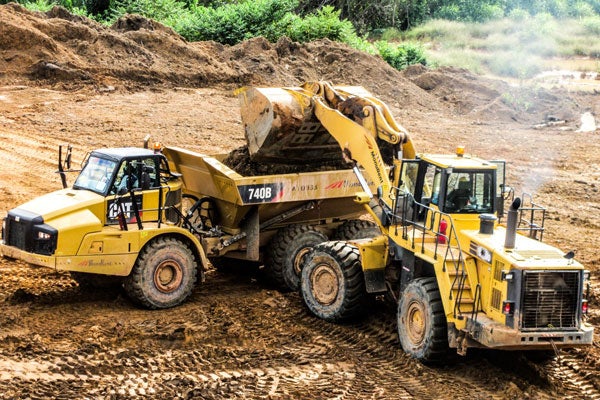
The Kearl oil sands project is located 70km away from Fort McMurray in Alberta, Canada. The onshore field is owned by Imperial Oil and ExxonMobil. Imperial Oil is the operator of the project.
Using the latest available technology, Imperial Oil expects to extract 169 billion barrels of bitumen from the project. The reserve estimate is also expected to increase to 1.8 trillion barrels on further exploration using advanced technologies.
The recoverable bitumen from the Albertan oil sands project is estimated at 4.6 billion barrels over more than 40 years. The project has so far provided employment to around 5,000 people.
Kearl is one of the highest quality oil sands in Canada. Canada stands in third place in the world with 174 billion barrels of oil reserves, out of which 170 billion barrels are located in Alberta alone. Another 169 billion barrels are recoverable from bitumen.
Project details of Kearl oil sands development
ExxonMobil Canada submitted the initial public disclosure for the project in 1997, while an updated project disclosure was submitted by Imperial Oil in November 2003. The project received regulatory approval from the government in June 2008. Engineering, procurement and construction (EPC) activities were carried out between 2009 and 2012. The first production from the field occurred in April.
Construction of the Kearl oil sands project infrastructure
The construction is being carried out in three phases. The first phase achieved an initial production of 110,000 barrels per day (bpd) of bitumen from the field and involved the construction of a utilidor to transport utility lines from the site to the ore preparation plant. It also included the construction of pipelines to carry air, fuel, process water and supply water to the field.
The construction of the hydrotransport and tailings pipelines made use of 14 heavy pump units, piping, and electrical systems. Approximately 6,000ft (2,000m) of sheet piles were used for creating an emergency dump pond.
The second phase will include expansion of the plant to produce an additional 110,000 barrels of bitumen per day by the end of the year. The third phase involves debottlenecking. It will include expansion of the field to double the production capacity to 345,000bpd by 2020.
Site construction works for the oil sands project involved the installation of piling, concrete foundations, structural steel, modules, tagged equipment, vessels, piping and electrical systems. It necessitated the clearing of 3,000 hectares of timber and excavating 6.1m³ of muskeg. It also required the excavation and segregation of 4.8 million cubic metres of topsoil and subsoil.
Other ancillary preliminary activities involved 42 million cubic metres of common excavation, 21.5 million cubic metres of dyke embankment fills, and 1.4 million cubic metres of ditching and drainage. The works also included 1.9 million cubic metres of granular fill, construction of access roads, excavating the opening cut and constructing a tailings dyke. The pre-construction works, overall, involved the movement of more than 50 million cubic metres of material.
Processing bitumen from Kearl oil sands
The field mines bitumen using proprietary paraffinic froth treatment (PFT) technology. The PFT process does not require on-site upgrading. It processes bitumen only once, removes water and solids and improves the bitumen quality.
High-capacity shovels and heavy-haul trucks are used to take the reserves out from the field and transport them for slurrying and extraction. The slurry preparation plant has two trains that process the sand extracted at a rate of 10,000t/hr. The maximum capacity of the trains is 12,000t/hr.
Contractors involved with Imperial Oil’s oil sands project
Kiewit and Klemke Mining joint venture received a contract in June 2008 from Imperial Oil for the initial site clearing and excavations at the project site.
PCL and Horton CBI are responsible for the construction of utilities, extraction, and tank farms in the field. ThyssenKrupp provided the equipment for the Ore Preparation Plant.
Fluor Corporation received a $1.5bn EPC contract in 2009 to provide infrastructure and offshore facilities for the first phase of the project.
AMEC Company was awarded an EPC contract by Imperial Oil for the first phase of the project. AMEC also provided front end engineering design for the project.
Kentz received an EPC contract to provide bulk materials, electrical and instrumentation site works. The contractual scope involved facilities and services such as wastewater treatment, steam generation, natural gas letdown station, utility and plant air, nitrogen, process water (including heaters) firewater, raw water and recycle water ponds, sewage treatment and electrical distribution.








